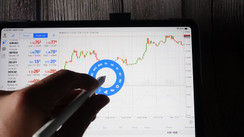As the dollar rose and there was growing evidence of a UK recession, the pound fell to its lowest point in nearly four decades; although the pound is struggling thanks to Brexit since 2016, this drop is the most significant. Sterling hit $1.1351, its lowest level since 1985, down as much as 1%. The latest blow came from statistics released on Friday that showed UK retail sales declined at their fastest rate in eight months in August as consumers reined in their spending due to the increasing cost of a living issue and declining confidence.
The UK pound has lost roughly 16% of its value compared to the dollar for this year. While that has largely been a tale of widespread dollar strengthening, with practically all major currencies giving in to the dollar, it also indicates the likelihood of a UK recession and the political instability brought on by a new administration. Budgets for households are being stretched by inflation that is almost at a 40-year high.
It hasn't done anything to boost the UK's competitiveness against other trading partners and has actually made the currency less desirable when considering labour expenses. Since the UK decided to leave the European Union in 2016, when the pound experienced its greatest yearly decline versus the dollar, it has been further severely hammered this year, thanks to the global financial crisis.
These negative factors are beginning to show up in comparison to other economies. Friday saw the worst sterling/euro exchange rate since February 2021. But the pound is not the only currency struggling at the moment, the Euro is another affected currency, plus most of the Eurozone countries are struggling with extremely high energy prices. The rise in these prices is due to the Russian-Ukrainian conflict and the sanctions that this conflict has brought.





